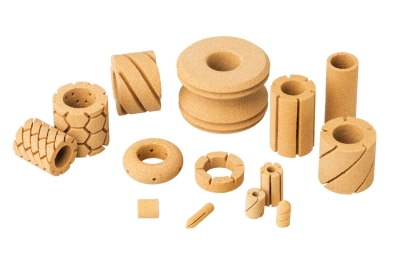
ST. PAUL‚ Minn. – (April 26, 2019) – Specifically designed abrasive tools require tight wheels, geometry, and tolerance for mass production. Companies that grind in the most complex ID applications need tailor-made solutions that adapt to tool design and specifications, and offer improved outcomes. 3M’s new Precision Structured Portfolio for internal grinding brings to market the first product available using 3M’s expertise in abrasives, bonding, manufacturing and 3D technology: 3M™ Precision Structured Vitrified CBN Grinding Wheel 1PVP.
“We listened to customer needs before we pioneered Precision Shaped Grain in Conventional Bonded Wheels, and we’ve seen significant productivity benefits in ID Grinding for our customers,” said Felix Thun-Hohenstein, Global Business Director, Abrasives Systems Division. “But many customers are using Super-Abrasives and are also seeking process improvements—now we’re engineering a Precision Structured portfolio of products that could help customers see similar benefits in very challenging ID grinding situations.”
Digital modelling, combined with a 3D printing process, allows flexibility in wheel design in terms of wheel shape. This includes unique 3D shapes and structures, surface slots, integrated cooling holes, passages and channels – all key elements that improve outcomes in detailed applications like fuel injectors, rotary bearings, steering components and more.
“In initial testing we’ve seen higher removal rates up to 40 percent when using the precision structured products, as well as lower grinding force,” continued Thun-Hohenstein.
3M’s new precision structured portfolio for ID grinding gives the capability to provide different kinds of geometries and shapes. 3D printing structures are made by the addition of thousands of miniscule layers which combine to create the products. Similarly, 3M wheels can now be built layer-by-layer according to their design. As a result, the performance is easier to adjust and can create tools with a more homogenous distribution of grit and pores. Additionally, 3D technology allows unique implementation of coolant delivery through bore methods, which can result in improved process performance and workpiece quality.
By specifying shape and formulation including bond porosity, 3M is now able to optimize wheel design which can help reduce process cycle time, increase dressing intervals and extend wheel life.
Contact Details
Related Glossary Terms
- abrasive
abrasive
Substance used for grinding, honing, lapping, superfinishing and polishing. Examples include garnet, emery, corundum, silicon carbide, cubic boron nitride and diamond in various grit sizes.
- coolant
coolant
Fluid that reduces temperature buildup at the tool/workpiece interface during machining. Normally takes the form of a liquid such as soluble or chemical mixtures (semisynthetic, synthetic) but can be pressurized air or other gas. Because of water’s ability to absorb great quantities of heat, it is widely used as a coolant and vehicle for various cutting compounds, with the water-to-compound ratio varying with the machining task. See cutting fluid; semisynthetic cutting fluid; soluble-oil cutting fluid; synthetic cutting fluid.
- cubic boron nitride ( CBN)
cubic boron nitride ( CBN)
Crystal manufactured from boron nitride under high pressure and temperature. Used to cut hard-to-machine ferrous and nickel-base materials up to 70 HRC. Second hardest material after diamond. See superabrasive tools.
- dressing
dressing
Removal of undesirable materials from “loaded” grinding wheels using a single- or multi-point diamond or other tool. The process also exposes unused, sharp abrasive points. See loading; truing.
- grinding
grinding
Machining operation in which material is removed from the workpiece by a powered abrasive wheel, stone, belt, paste, sheet, compound, slurry, etc. Takes various forms: surface grinding (creates flat and/or squared surfaces); cylindrical grinding (for external cylindrical and tapered shapes, fillets, undercuts, etc.); centerless grinding; chamfering; thread and form grinding; tool and cutter grinding; offhand grinding; lapping and polishing (grinding with extremely fine grits to create ultrasmooth surfaces); honing; and disc grinding.
- grinding wheel
grinding wheel
Wheel formed from abrasive material mixed in a suitable matrix. Takes a variety of shapes but falls into two basic categories: one that cuts on its periphery, as in reciprocating grinding, and one that cuts on its side or face, as in tool and cutter grinding.
- inner diameter ( ID)
inner diameter ( ID)
Dimension that defines the inside diameter of a cavity or hole. See OD, outer diameter.
- tolerance
tolerance
Minimum and maximum amount a workpiece dimension is allowed to vary from a set standard and still be acceptable.







